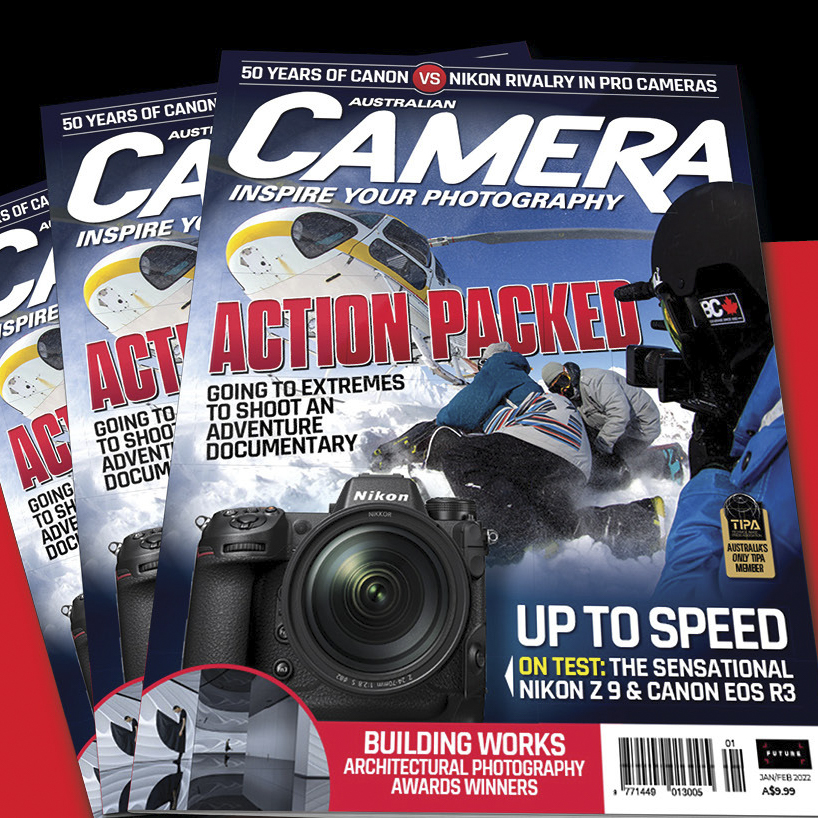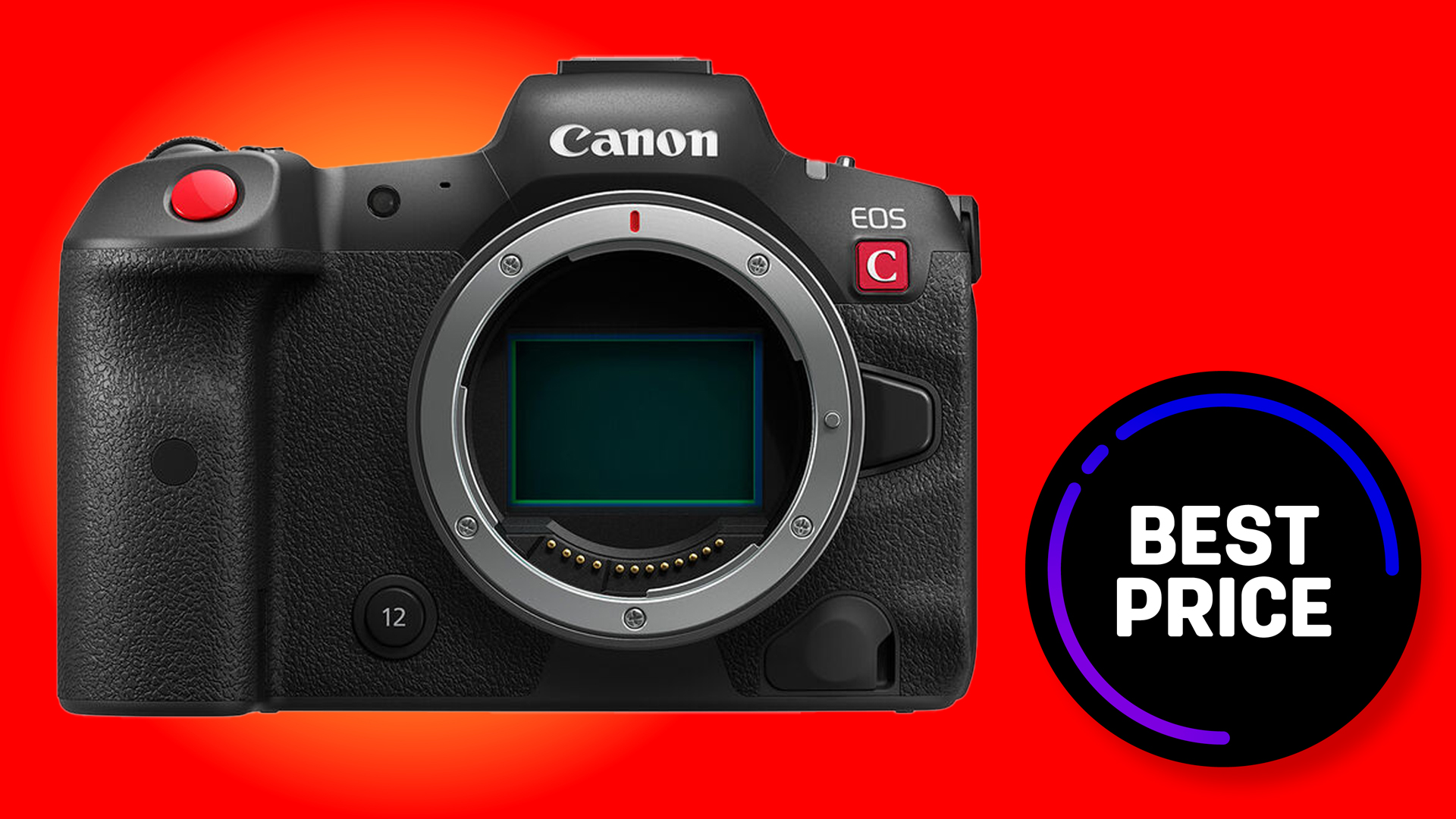2023 Australian Camera Magazine Imaging Awards – all the winners
Celebrating the best of the best, here are the winning cameras and lenses in Australian Camera Magazine's annual awards

Various external circumstances had a significant impact on the manufacturing and distribution of imaging products this year, but they didn’t stop it still being a bumper one in terms of new cameras and lenses. In fact, with the emphasis on higher-end cameras, the judging of our annual product design awards proved to be more challenging than ever.
Once again this year, the knock-on effects of the COVID-19 pandemic continued to have an impact on many industries that have been hit by supply-chain issues, illness-related staffing shortages – sometimes necessitating total shutdowns – and various other logistical challenges. To the mix in 2022 has been added the increases in fuel costs arising out of the on-going war in Ukraine, which has had significant ramifications for transport costs and, consequently, a huge range of goods and services have become a lot more expensive. All this has no doubt shaped what the last year has looked like for the photo industry… which is to say, just a little bit unusual.
With just a couple of exceptions, all the new cameras released during our period of eligibility have been either high-end or professional. The exceptions are the Canon EOS R10 and the Nikon Z 30… and really the R10 can be classified as an enthusiast-level camera as it’s a lot more than an entry-point model. Will we ever see such a thing again? Certainly with the transition from DSLR to mirrorless there has been a general move upmarket, especially with the emphasis on the full-frame sensor which essentially precludes a “budget” model. But even with the cropped sensor systems – i.e. Micro Four Thirds and APS-C – all the recent arrivals have been top-end, with price tags to match. This is no doubt part of a concerted effort to sell the benefits of the cropped sensor systems to professionals – especially in the sports, action and wildlife areas, as well as video-makers in general – but also symptomatic of a market that’s trying to put more distance between ‘real’ cameras and smartphones. Of course, smartphones are continuing to get smarter in terms of their photography and video capabilities, so this may be a strategy with limited effectiveness over time, especially if the economic situation makes affordability more of a critical factor in buying decisions.
Right now, not only do the camera makers want to convert DSLR users – of which there are still a huge number – but in most cases they also want to convince them to spend more in the process and move up to something with more features and a higher spec. It’s likely you’d be doing this anyway even if mirrorless hadn’t happened, but there are additional considerations here, such as lenses, so making the switch isn’t quite as straightforward as upgrading your camera body.
Regardless of the whys and wherefores, this has been a champagne year for great cameras – we’ve already mentioned the EOS R10, but also the R7 and the flagship R3, Fujifilm X-H2S and X-H2, Nikon Z 9, Panasonic Lumix GH6, Leica M11, Sony A7 IV and OM System OM-1. That’s a star-studded line-up by any measure, with the cropped sensor formats easily holding their own against the full-frame heavy hitters. It certainly presented some challenges when it came to judging in the Enthusiast and Professional categories, prompting the decision – as we did last year with the lens categories – to distinguish between the cropped sensor and full-frame cameras. This year, we’re only doing this for the Professional category, but down the track it may also be necessary for the Enthusiast category too (however, as just discussed, whether there will ever by a budget-priced full-frame mirrorless camera is debatable).
As has been happening over the last few years, the lens categories continue to be very hotly contested as everybody rushes to expand their mirrorless systems. Canon and Nikon have been particularly impressive here, especially as – also pertinent to the opening discussion here – they have both been delivering more affordably priced lenses as well as premium models. Both Sony and Fujifilm have reached the stage where they’re starting to upgrade their earlier lenses, often with revised optical designs that further exploit the performance benefits of the mirrorless camera configuration’s shorter flange back distance. The third-party lens makers have also stepped up a gear, expanding their mirrorless offerings, especially where open-platform licenses allow access to control algorithms. Sony, in particular, has to be commended here, and the outcome has been a huge choice of lenses for the users of FE-mount cameras. With its own system now topping 70 models – easily the largest and most extensive in the mirrorless camera world – it’s clearly confident enough to allow for some greater competition… well, you still have to buy a Sony FE-mount body, don’t you?
This year, a couple of categories picked themselves by virtue of having only one eligible candidate – Medium Format Camera and Photo Printer – but this doesn’t diminish from either winner… if we don’t think there’s a worthy product in a category, we simply don’t give an award.
Get the Digital Camera World Newsletter
The best camera deals, reviews, product advice, and unmissable photography news, direct to your inbox!
Eligibility
The period of eligibility for the Camera Magazine Imaging Awards runs from 1 October to 30 September of a calendar year, and extends to any product within each of our categories released onto the Australian market during this period. If you read our awards feature from last year, you may remember we were proposing to switch to the calendar year primarily to simplify matters, but we’ve now decided to stick to the eligibility period we’ve been using since these awards began back in 1981. This is primarily because it better suits the way we run the awards announcement, but also fits in with the industry’s product announcement cycles, particularly in terms of the run up to the all-important Christmas period.
Another requirement for eligibility is that a product must be available for purchase by the time we announce the winners. This means being physically available at retail outlets in the country’s major metropolitan centres as well as from online sellers. This is simply because, firstly, we – or one of our affiliates – have to be able to evaluate the product and, secondly, if you’re sufficient enthused by a winner to want to buy it, it’s frustrating if you have to wait. Or you’ll lose patience and buy something else, in which case nobody wins.
We spend the whole year compiling long lists of potential winners and these are fine-tuned as we go along, including after we’ve been involved with the annual TIPA World Awards judging earlier in the year. All the eligible products in each category are evaluated on a number of design, operational and performance criteria. The key consideration is just how effectively has the design brief been met and whether the product delivers everything that’s promised, including in all performance areas. Being a TIPA member, we also access all the performance data from the French engineering company DXOMark Image Labs which conducts all the group’s fully independent camera and lens tests. Additionally, as part of the global Future Publishing empire, we can talk to our colleagues at Digital Camera World about their tests and findings.
Price is also taken into account, but isn’t necessarily a deciding factor as some products would still be winners even if they cost a whole lot more, simply because they’re just so much better than anything else in the category. That said, some products represent such exceptional value-for-money that the price simply can’t be ignored.
Each of the judging criteria carries a point score. After we’ve arrived at shortlists of the top-scoring products in each category, we then take a look at the more subjective elements such as the styling, user experience and the many other – often quite small – details that make a product, particularly a camera, something a bit special.
And the winners are...
Consumer Mirrorless Camera
Canon EOS R10
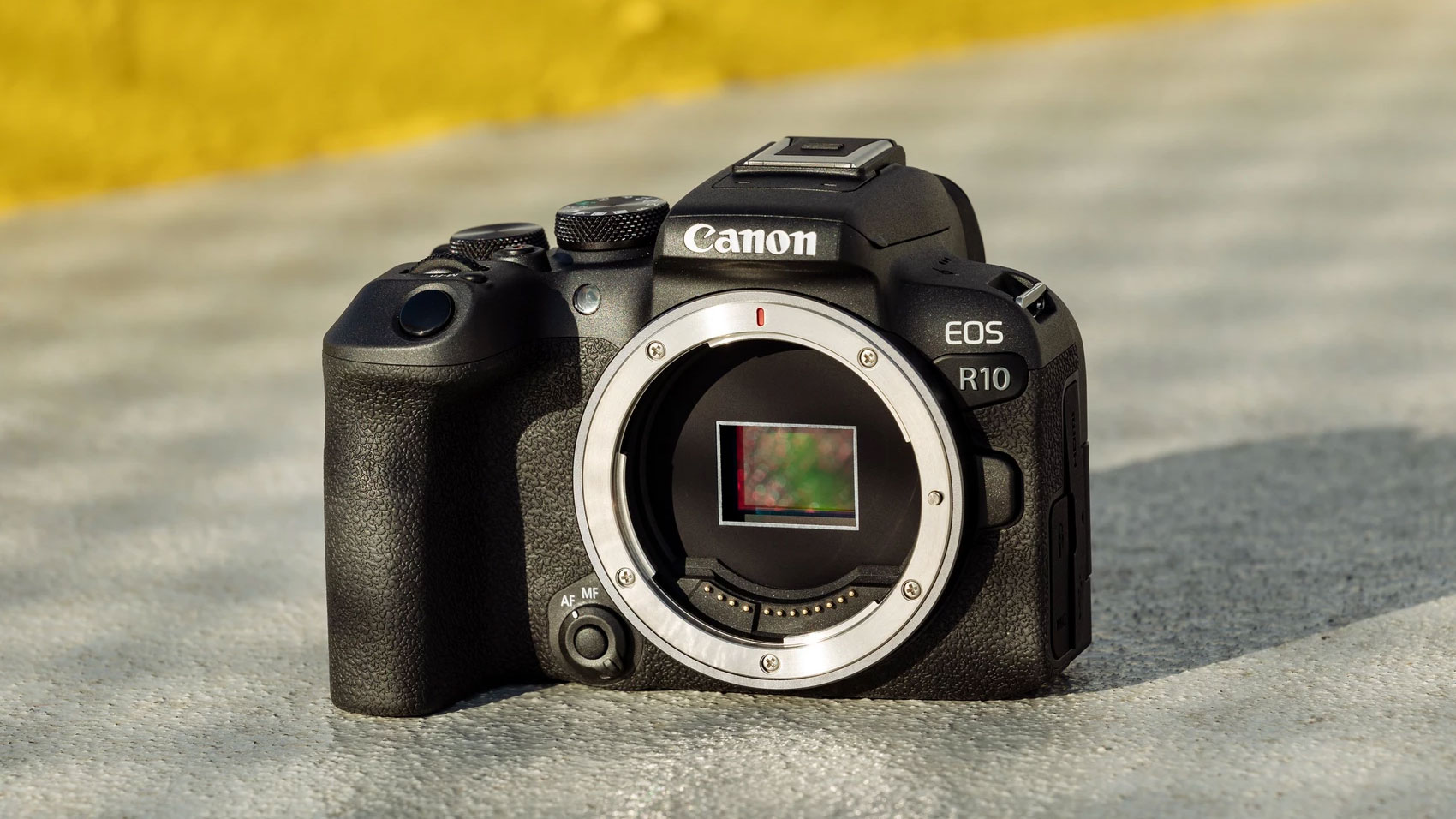
Now that Canon has well and truly got the mirrorless bit between its teeth, it’s back to its old form, making cameras that offer hard-to-resist combinations of design, innovation, features and performance. Significantly, both the new APS-C RF-S mount bodies are winners this year, packing a lot of EOS R goodness into a more compact and lightweight camera. While both the R10 and R7 are primarily designed to convince the legions of Canon APS-C DSLRs to jump into mirrorless, both cameras are more than competitive with the comparative cropped sensor models from Sony and Fujifilm, as well as the M43 offerings.
To be frank, the EOS R10 didn’t have too much to contend with in this category in terms of rivals, but there’s stiffer competition from existing models such as Fujifilm’s X-T30 II and Sony’s A6400. Regardless, Canon’s new entry-level mirrorless camera stacks up very well, and is miles ahead of any of the much less convincing EF-M models. Any of these users will find the R10 a revelation in the way it works so smoothly and seamlessly, but it’s the DSLR brigade that Canon has to convince most and it’s hard to see why anybody currently with an EOS 200D, 700D or 800D series Canon DSLR isn’t going to be amazed at how much more the R10 offers in a smaller package.
There’s no question Canon has had a sharp eye on the bottom line, but the R10 still gets the latest Dual Pixel CMOS AF II autofocusing, 23fps continuous shooting, a bunch of higher-end features including 10-bit HEIF capture, and video recording up to 4K/30p uncropped also with 10-bit colour. From a DSLR user’s point-of-view, there are features that they could only once have dreamt about, such as full-frame autofocusing coverage with subject-based tracking, and continuous AF/AE adjustment regardless of the shooting speed, which is still as fast as 15fps with the mechanical shutter. The electronic shutter’s 23fps wasn’t even achievable with Canon’s pro-level DSLRs, so the R10 really does show off what’s possible with the mirrorless configuration in terms of both performance and portability. The very compact RF-S lenses are an integral part of this, of course, and there’s only two zooms available right now, but given Canon’s track record with its full-frame system, we don’t expect to be waiting long for more models to arrive.
In the meantime, the EOS R10 is straightaway the best value mid-range APS-C mirrorless camera on the market… and obviously the best mid-range model as far as our awards this year are concerned.
Read more in the Canon EOS R10 review
Enthusiast Mirrorless Camera
Canon EOS R7
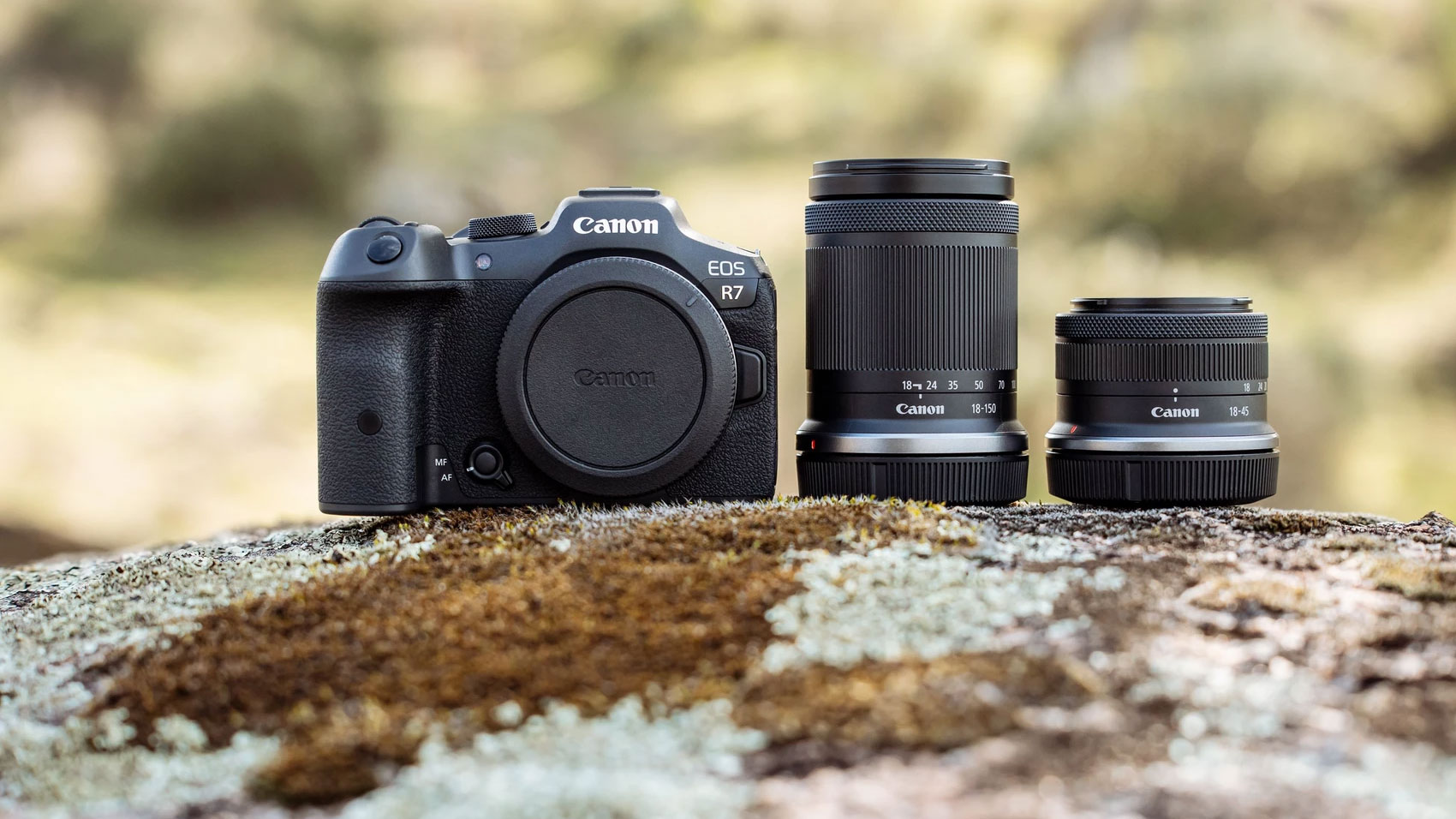
Canon’s ability to build extremely capable enthusiast-level APS-C DSLRs kept it at the top of the interchangeable lens camera market for decades, and established an extremely loyal following. There’s no doubt that the majority of these users have been waiting patiently for Canon to come up with the mirrorless equivalent and here it is – the EOS R7. It continues in the tradition of Canon DSLRs such as the EOS 7D/7D II and the EOS 90D, offering an extensive feature set and excellent performance
underpinned by efficient ergonomics and handling. It’s a formula that’s worked brilliantly for Canon for a long time and will continue to do so with the EOS R7, which adds the various benefits of the mirrorless configuration to the mix.
Obviously for starters it’s smaller and lighter than the DSLRs it’s intended to replace, but also very much faster with superior autofocusing. In fact, in many respects the R7 is the cropped sensor version of the very accomplished full-frame R5… so it’s a mighty powerful little package. The 30fps continuous shooting that’s possible with the electronuc shutter – with, it has to be noted, full AF and AE adjustment – is even faster than the flagship R3 and, of course, blows any DSLR into the weeds. The R7 also has in-body image stabilisation with correction for up to seven stops and the GRP bodyshell is weather sealed – both of which extend the camera’s capabilities in any conditions. There’s also the convenience of dual memory card slots which, sensibly at this level, are both for SD devices and have UHS-II speed support. Also very sensible is keeping the R7 in the LP-E6 battery club as there’s a long list of Canon DSLRs – both current and discontinued – that use this power supply and many users will have spares which are still compatible even if they don’t support in-camera recharging (as the last couple of versions do). Similarly, the converts from Canon’s APS-C DSLRs are going to find much that’s very familiar on the EOS R7 in terms of the way it operates, either via the touchscreen or the hard controls. And they’re also going to delight in finding a camera that’s both more compact and more capable.
While there’s no question that the R7 is primarily aimed at existing Canon camera users, this hasn’t been used as an excuse not to try hard. The result is an APS-C mirrorless camera that can hold its own against full-frame competition as well as highly-credentialed cropped sensor models such as Fujifilm’s X-T4. It’s a truly impressive start for Canon in this particular sector and it’s hard not to see ILC market dominance ultimately being the end result.
Read more in the Canon EOS R7 review
Professional Mirrorless Camera
Nikon Z9
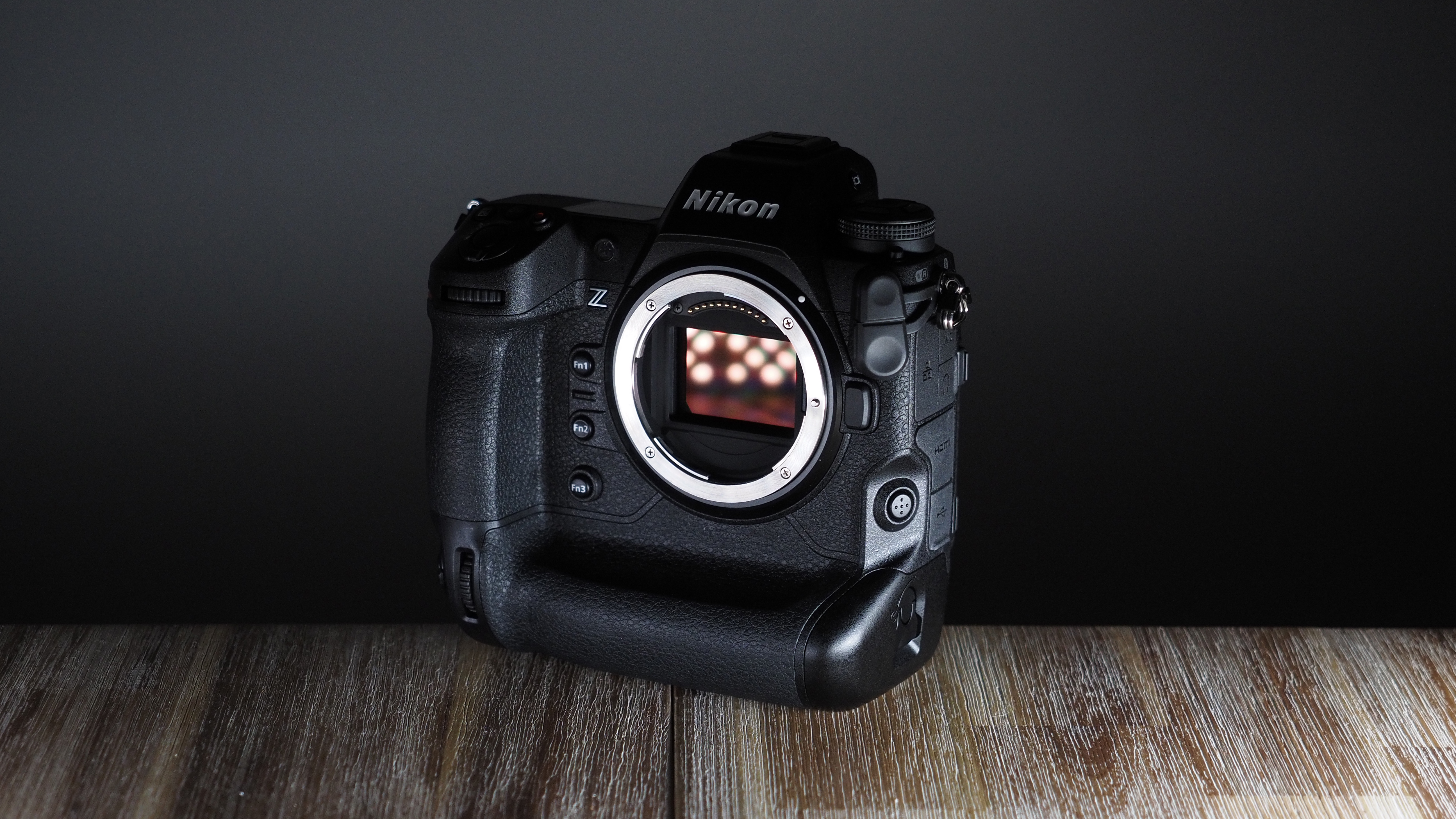
There have been occasions in the history of these awards that the professional camera category has been yet another round of the Canon-versus-Nikon title fight. Here we are again with our new Full Frame Pro category coming down to the Canon EOS R3 and the Nikon Z 9. Not surprisingly, in a head-to-head like this, it comes down to the little things to make the difference. Fundamentally, both the EOS R3 and the Z 9 fulfil the brief in terms of convincing pros that mirrorless is the future no matter how wedded they might be to their reflexes. Of course, Canon has already stated that there won’t be a replacement for the EOS-1D X II, and it will the same over at Nikon, but their pro-level mirrorless cameras are definitely more carrot than stick. Right from the beginning, there have always been philosophical differences in the design approaches and it’s still the case here.
On balance though, nobody builds a professional camera more competently and cohesively as Nikon, especially in terms of handling and ergonomics. While much more compact than the D5 or D6, the Z 9 is still a big camera but, once again, Nikon proves that it doesn’t have to be a handful. It feels supremely comfortable in the hand and is nicely manoeuvrable even with a big lens fitted. The ergonomics are close to flawless, so this is a camera that really works with you, especially when you need to work fast. The Z 9 delivers both high res and high speed, but with the option of much more speed and smaller image sizes… namely, 120fps at 11MP a pop and with continuous AF/AE adjustment. Nikon calls these “press-ready stills” and it’s a pragmatic acknowledgement of what many sports and press photographers really need. With the camera’s full 45.7MP resolution in play, you still get 30fps shooting – again with continuous AF/AE adjustment – for a burst of over 1,000 JPEGs. By any measure, they’re impressive numbers.
The usually more conservative Nikon has been the first to do away with a physical shutter altogether. The Z 9’s stacked sensor deals with the key issues of rolling distortion and very low flash sync speeds. It also allows for a blackout free viewfinder during high-speed shooting. Minus any moving parts, it isn’t subject to physical wear and is completely silent, plus with the top speed is 1/32,000 second. On the video side, there’s up to 8K UHD at 25/30p, and 4K UHD up to 100/120p with the option of 10-bit ProRes 442 HQ recording internally (at up to 4K/60p). This has since appeared on a number of other cameras, but the Nikon Z 9 was first and it’s another recognition of the realities of usage.
Nikon has seriously gone to town in terms of exploiting the key benefits of the mirrorless configuration, but the Z 9 is still old school where it matters the most.
Read more in the Nikon Z9 review
Professional Mirrorless Camera Cropped Frame
Fujifilm X-H2S
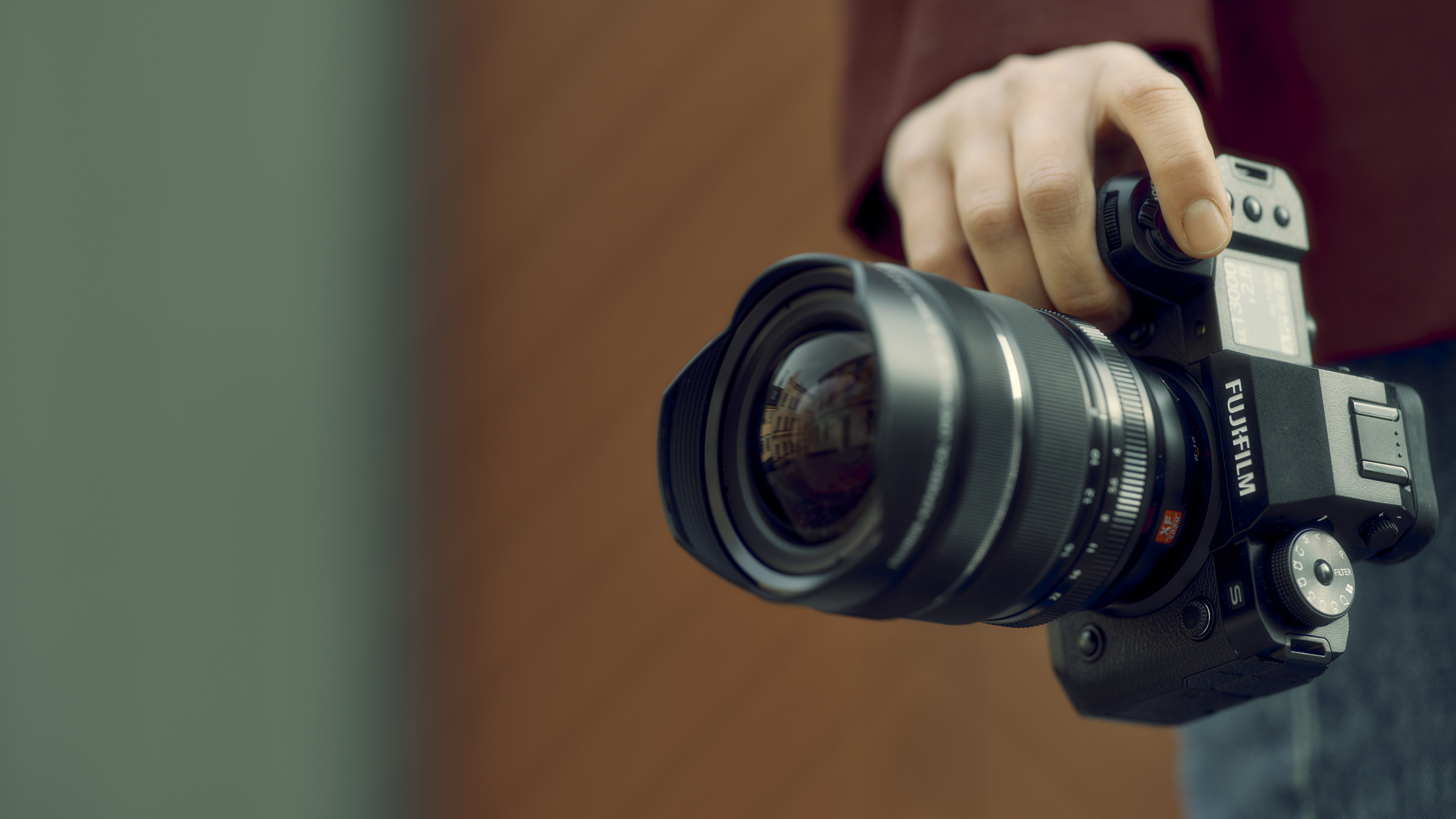
Regular readers will know that we’re big fans of Fujifilm’s neo classical-mount cameras, which is why they’ve collected a few awards here since the original X-Pro1 (Professional Compact System Camera category winner in 2013) and X-T1 (the same award in 2015). So it’s ironic that when Fujifilm adopts a more conventional control layout for its latest X-mount flagship, it comes up with the nicest-handling model to date. It’s supremely comfortable for what is a fairly bulky camera and beautifully intuitive to use.
The higher-res X-H2 has arrived since, but the X-H2S is still the better all-rounder, combining 26MP resolution with up to 40fps bursts. This is with continuous AF/AE adjustment, which the camera is able to maintain at up to 120fps when you’re shooting video. If you choose to shoot stills at 30fps – which is still fast enough for a lot of high-speed action – you can keep going for over 1,000 best-quality JPEGs and up to 270 compressed RAW frames. Again, this is a practical consideration of the real-world requirements for sports, adventure, press and wildlife photographers. And Fujifilm is starting to build up a useful set of XF telephoto lenses, including the monster 150-600mm, which is equivalent to 229-914mm!
With video, the X-H2S shoots 6.2K/30p, 4K DCI or UHD at up to 120fps and Full HD at up to 240fps. It’s made possible by the adoption of a stacked BSI design for the next-gen X-Trans CMOS 5 HS sensor, and the use of a CFexpress Type B memory card (although a standard SD UHS-II slot is still provided). Various passive methods of heat dissipation allow for long clip lengths even at very high bit rates (which, by the way, can top 2700Mbps), but a nifty accessory cooling fan allows this to be maintained in very hot shooting conditions… such as would be often encountered in Australia. And Fujifilm has followed Nikon in giving the X-H2 internal ProRes recording in a choice of flavours.
For stills photography, the camera is packed with goodies to enhance both the capabilities and performance – among them in-body image stabilisation (for up to seven stops correction), 10-bit HEIF capture, a ‘Pre-Shot’ function (available at 40fps too), AI-based subject detection and AF tracking, and the ever-faithful Film Simulation profiles that now number 19. The EVF has a resolution of 5.76 million dots, 0.8x magnification (35mm equivalent) and a refresh rate of 60fps, so it’s one of the nicest in the business… and certainly the best in the APS-C category.
Fujifilm has got this recipe just right – ergonomics, handling, capabilities, feature set, AF performance and image quality – and so this is one of those cameras in which everything comes together so cohesively.
Read more in the Fujifilm X-H2S review
Hybrid Camera
Panasonic Lumix GH6
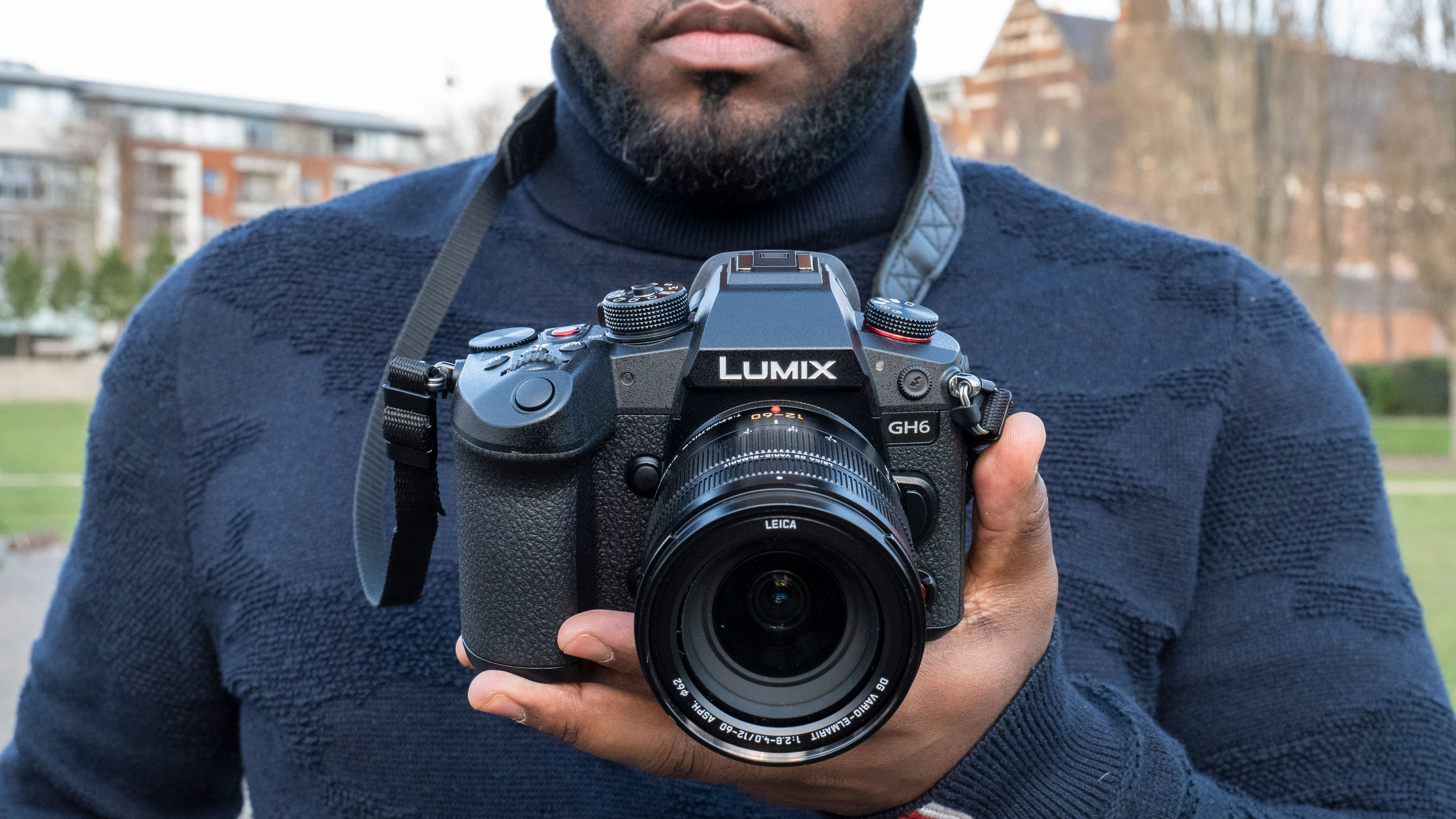
After the GH5 Mark II – the winner of this category last year – we wondered just how Panasonic might better a camera that already did everything so well. Should we be surprised that the GH6 is next level? What’s more, it’s next level while still retaining a refreshing real-world practicality – Panasonic has practised commendable restraint and come up with some that’s hugely better than the previous model, but still appeals as a no-nonsense workhorse for both photographers and video-makers.
The GH6 takes everything a step further – especially in terms of its video capabilities – and thus refining the hybrid camera offering in general. It’s also the most accomplished Lumix G-series model ever, but it wins here because it truly excels as a video camera, making it a viable alternative to a dedicated cinema camera, but with the key twin attractions of portability and pricing.
As with the Fujifilm X-H2S, Panasonic has got the GH6 recipe just right, including handling and ergonomics, the rugged construction and a pretty decent set of features for photographers. Interestingly here, Panasonic offers a more pared-down, but subsequently purer, stills capability. However, it still includes a multi-shot high-res function – with the choice of tripod or handheld settings – and a top shooting speed of 75fps for a burst of 200 best-quality JPEGs or RAW files. Frankly, it’s hard to see anybody buying the GH6 and not tapping into its awesome video arsenal, but video-makers are getting great stills functionality on top of it.
The sensor’s effective resolution of 25.2MP is the highest in the Micro Four Thirds world at present, but more interesting is its parallel dual gain output. Unlike the previous dual gain circuitry, which was either one or the other, the GH6 sensor simultaneously processes for low gain (i.e. dynamic range and colour saturation) and low noise (i.e. sensitivity). These outputs are combined to give an image that has increased detailing in both highlights and shadows as well as enhanced saturation. The key benefit is improved high ISO performance and exposure latitude.
It’s virtually impossible to sum up the GH6’s extensive video capabilities in just a couple of sentences, especially now that two firmware upgrades have added to the already very long list of formats, resolutions, codecs, frame rates, compression options and colour subsampling. Basically, whatever you want to do in 4K video is available, providing both practicality and immense flexibility. The highlights include Apple ProRes recording internally at up to 5.7K/30p, 12-bit Apple ProRes RAW video external recording via HDMI, 5.8K ‘open gate’ anamorphic recording internally, the full V-Log gamma curve and 24-bit 48 kHz sound recorded.
There was some pretty stiff competition in up-specced hybrid cameras this year – including the Fujifilm X-H2S and H2, Canon’s EOS R3 and the Nikon Z 9 – but the Lumix GH6 again demonstrates Panasonic’s innate understanding of this space.
Read more in the Panasonic Lumix GH6 review
Medium Format Camera
Fujifilm GFX 50S II
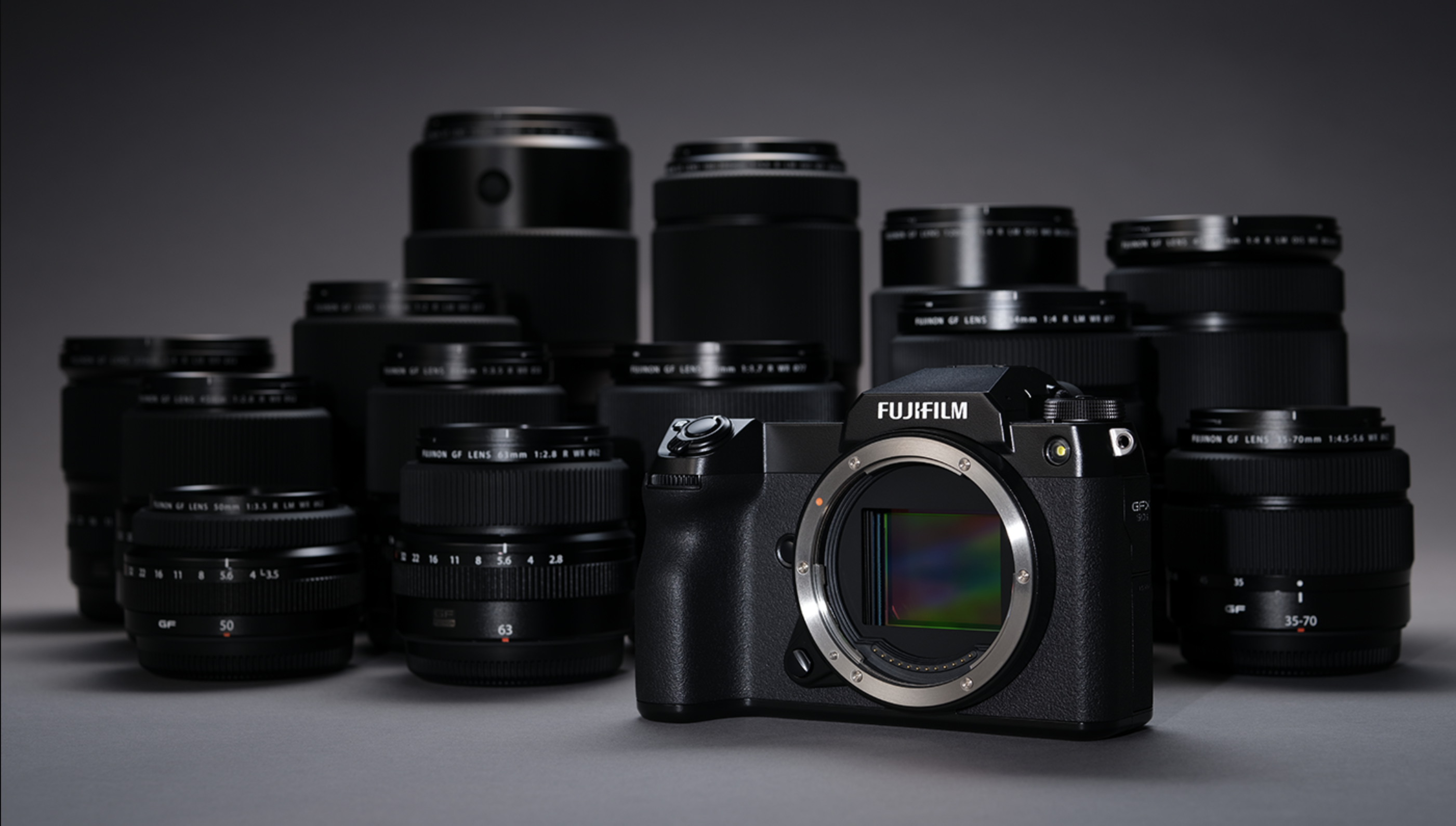
Fujifilm has revolutionised the digital medium format market with its mirrorless GFX-series cameras, not just in terms of their much-expanded capabilities – compared to any DSLR – but also their affordability. The GFX 50S II takes both further by combining the original 50MP sensor from the very first model – the 50S – with the more compact and lighter-weight bodyshell introduced with the GFX 100S. It makes for a powerful combination with enhanced handling, not just as a result of the ergonomics but also the provision of in-body image stabilisation that gives up to 6.5 stops of correction for camera shake.
The big deal is the 51.4MP ‘33x44’ sensor that has an imaging area that’s 1.7x bigger than full frame. The pixel size is 5.3 microns which gives a claimed dynamic range of 14 stops, and Fujifilm has designed the microlenses to optimise sensitivity and further enhance the signal-to-noise ratio. The native sensitivity range is equivalent to ISO 100 to 12,800 with extensions down to ISO 50 and up to ISO 102,400.
The sensor’s higher signal-to-noise ratio – and its wide dynamic range – compliment the sensor’s exceptional sharpness, with a smoother and cleaner tonality that delivers a classic medium format ‘look’. The dynamic range also delivers exceptional exposure latitude as well as brilliant high ISO performance up to 12,800,
The imaging quality tops the list of why you’d buy the GFX 50S II in preference to a full-frame mirrorless camera, especially as it’s actually cheaper than a number of the latter. Of course, you don’t get the shooting speed or the advanced AF capabilities, but medium format photography has always been about a slower and more considered approach. Nevertheless, the GFX 50S II handles just as comfortably and efficiently as any of Fujifilm’s higher-end X-mount cameras and shares most of their features too, so it’s still a hugely capable camera even if you are restricted to 3fps continuous shooting and contrast-detection AF.
So, in a nutshell, no other digital medium format camera is quite so accessible and affordable, or quite the IQ all-rounder thanks to the sensor’s balance of pixel count and pixel size.
Read more in the Fujifilm GFX 50S II review
Prime Lens Full Frame
Samyang AF 135mm f/1.8 FE
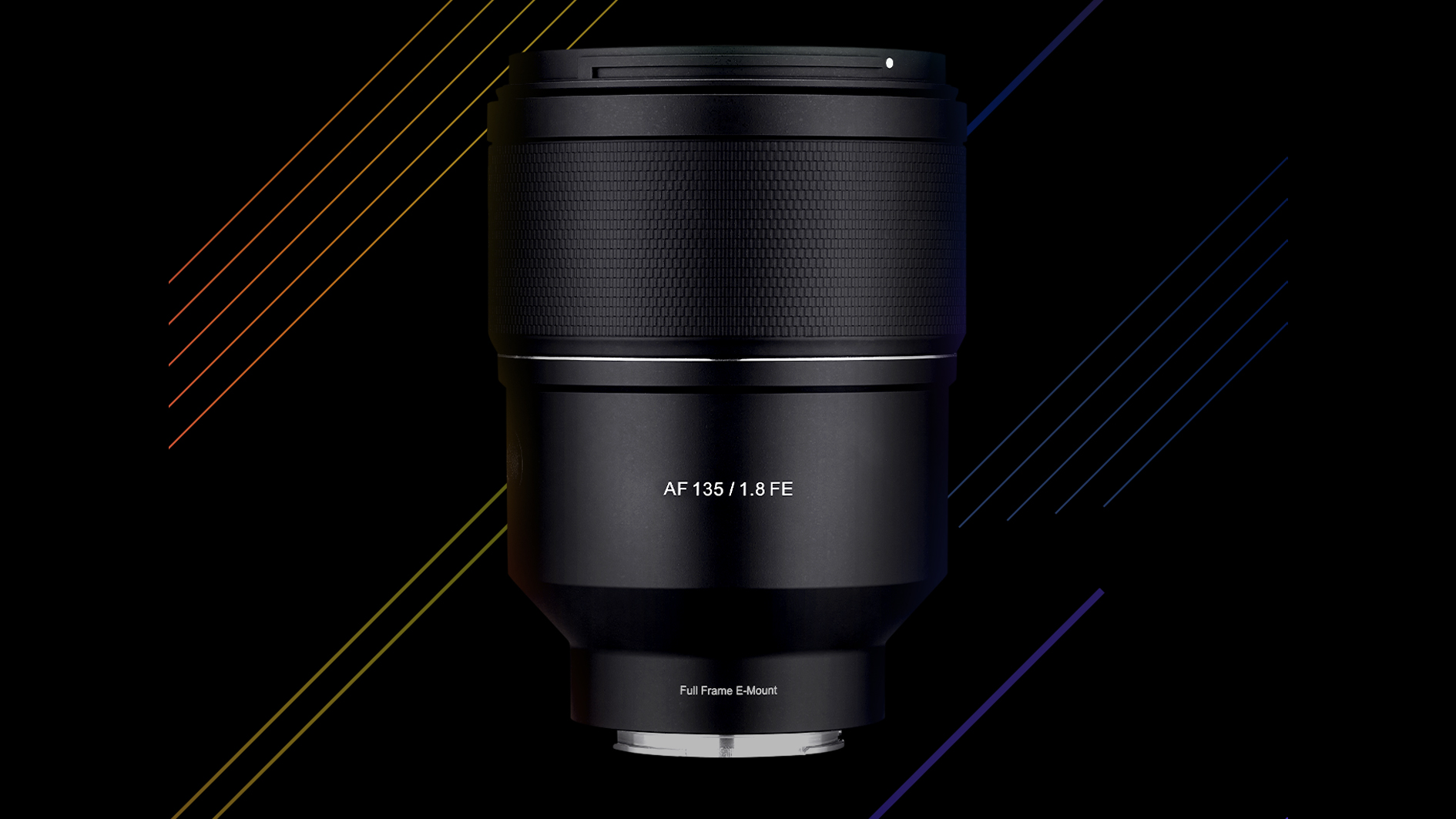
It’s a mark of how far Samyang has come in recent years that we now consider it one of the mainstream independent lens makers along with the likes of Sigma, Tamron and Tokina. This is certainly true of its growing line-up of mirrorless system offerings that have seen the South Korean manufacturer prove as competent at autofocusing and zooms as it has been with manual focus primes… on which it has built quite a reputation.
However, high performance primes are still clearly a Samyang forte as evidenced by the FE-mount 135mm f/1.8 autofocus model which revives a true classic and combines with the latest in optical technologies and design. It’s significant that in this very hotly contested category, the Samyang 135mm won against lenses from Canon, Fujifilm, Nikon, Sigma and Panasonic. What’s more, another two Samyang primes – the AF 35mm f/1.4 FE and the AF 85mm f/1.4 FE II – made the shortlist.
It’s a big lens, but beautifully finished, as we’ve now come to expect from Samyang, so it not only looks great but feels great too. The construction is weather-sealed and Samyang provides all the functionality you’d expect with a Sony-branded lens, including a focus hold button. However, it also adds a clever function of its own called the ‘Astro Focus’ mode that automatically sets the focus to the factory-set infinity position. This is a real plus for astrophotography and can be hard to set properly manually, especially with longer focal length lenses.
On the inside, the Samyang AF 135mm f/1.8 has a complex optical design which includes a total of six special elements to optimise sharpness, minimise distortion and correct for chromatic aberrations (both lateral and longitudinal), spherical aberrations and comatic aberrations. The net result is a superlative optical performance that’s near faultless in terms of the sharpness across the frame even at f/1.8, and the level of correction for both aberrations and distortion. There’s an 11-blade diaphragm to really enhance the bokeh and, of course, lots of scope for playing with the depth-of-field.
The 135mm prime lens had largely fallen out of favour, but Samyang’s new AF model really emphasises – and enhances – its versatility and creative potential.
Read more in the Samyang AF 135mm f/1.8 FE review
Zoom Lens Full Frame
Sony FE 24-70mm f/2.8 G Master II
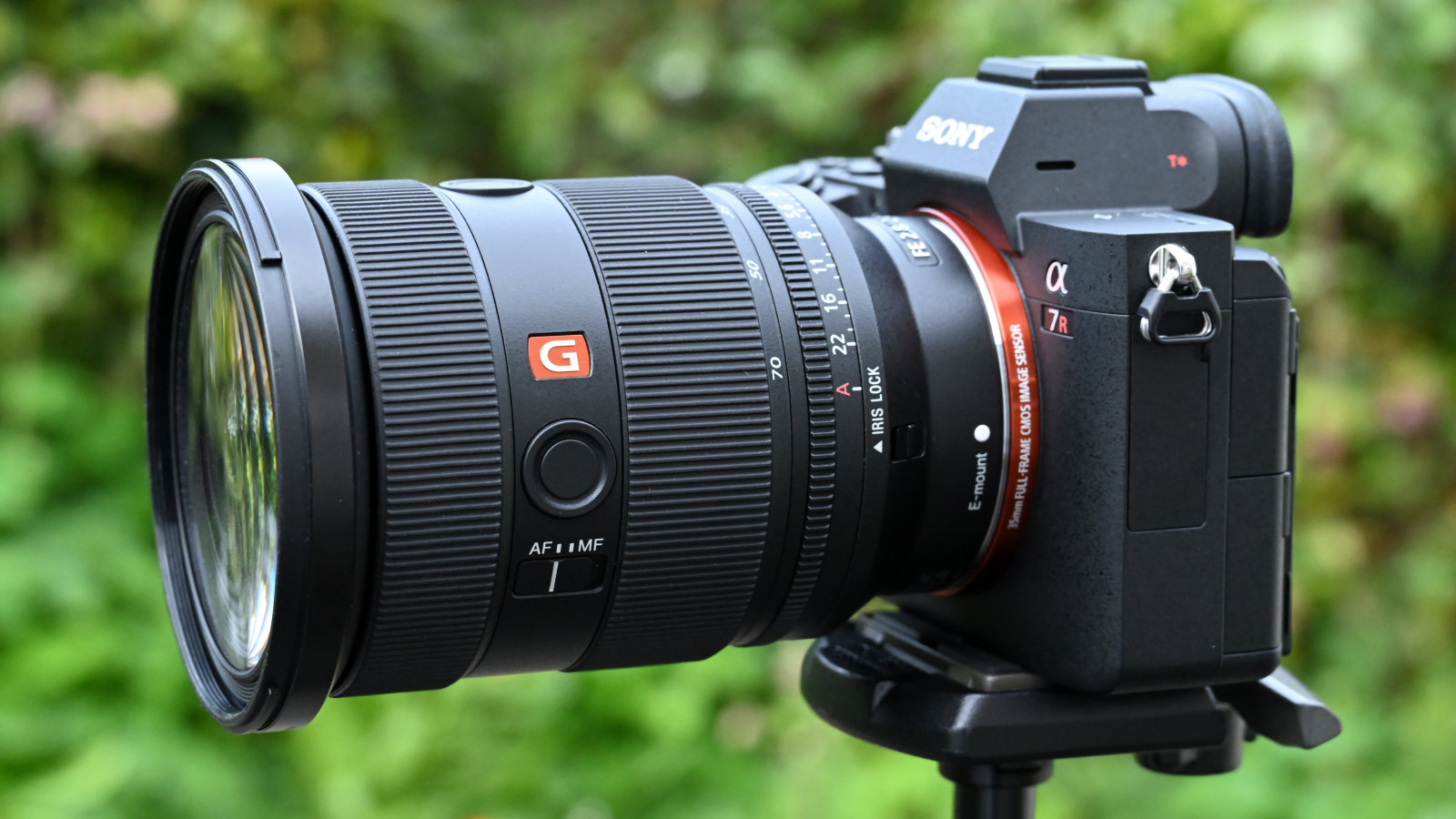
Sony hasn’t put a foot wrong with its premium G Master lenses and now it’s revising some of the key models – such as the 24-70mm f/2.8 standard zoom – to make them even better. As with Sony’s Mark II version of another staple, the 70-200mm f/2.8, the new 24-70mm f/2.8 further leverages the size and optical performance benefits that are available with the mirrorless camera configuration. In fact, the new lens is a significant 20% lighter and approximately 18% less bulky with the overall length reduced by 16 millimetres. It’s claimed to be the smallest and lightest 24-70mm f/2.8 zoom for a full-frame mirrorless camera system.
Based on the feedback from professional users, the optical construction has been designed so the zoom’s centre of gravity is now further back towards the lens mount to improve the handling balance. Interestingly, Sony has added a manual aperture collar probably with videographers mostly in mind, but it’s a plus for photographers too, especially as the click-stopped adjustments are in one-third stop increments. The zoom control is adjustable for torque which can be set to either Tight or Smooth, and the manual focusing collar is linear in its adjustment to enhance controllability, especially with small inputs. There’s a total of four AF drives to support continuous stills hooting at up to 30fps and 4K video at up 120fps
The optical construction is all-new and, frankly, a work of art which uses 20 elements in 15 groups, including a total of nine special types. It includes a floating focus arrangement, and is designed to minimise both focus shift when zooming and focus breathing when focusing. There’s also improved weather protection measures and an 11-blade diaphragm for super-smooth out-of-focus effects.
The optical performance is nothing less than stunning, which is no doubt why Sony isn’t really worried about the number of third-party competitors. Sony Alpha users really have a lot of choice here, but the ‘in house’ FE 24-70mm f/2.8 G Master II is the pick of them by a very long shot.
Read more in the Sony FE 24-70mm f/2.8 G Master II review
Prime Lens Cropped Frame
OM System M.Zuiko Digital 20mm f/1.4 Pro
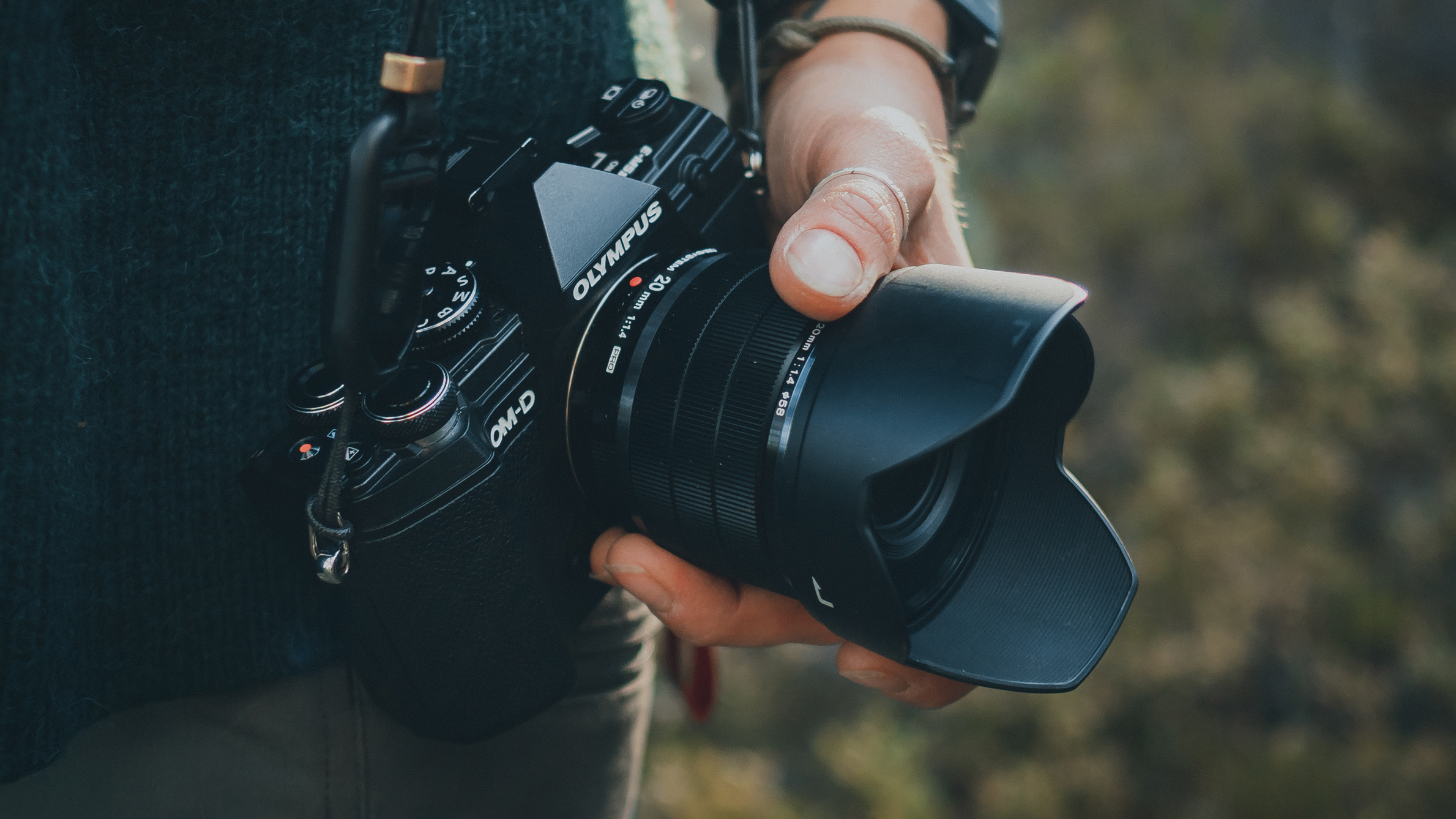
Superb lenses have been a trademark of the Olympus systems ever since the first Zuiko OM-mount models arrived with the original OM-1 back in 1972. The cameras, of course, had much to commend them, but it was the lenses that sealed the deal and it looks like this is going to continue into the era of OM System products.
The M.Zuiko Digital ED 20mm f/1.4 PRO is, in fact, the first product to bear the OM System branding, but the emphasis is still on an optical design that optimises performance no matter how difficult it might be to achieve. Of course, in-camera corrections can cover up all manner of shortcomings, but you get the feeling that the OM Digital Solutions engineers are old school and take pride in solving problems via tweaks and tuning of the optical design (that said, M43 cameras still perform some lens corrections, notably for lateral chromatic aberrations). Nevertheless, the 20mm’s 11-element construction includes no fewer than eight special types to optimise the sharpness and the degree of correction for both aberrations and distortion. The external construction is weather sealed and insulated to allow for operation in subzero temperatures, plus there’s a moisture-repelling fluorine coating on the front element.
Equivalent to 40mm, in practice, this lens proves to be remarkably versatile aided by the maximum aperture of f/1.4 and a minimum focusing distance of just 25 centimetres. It’s very well made and, as you’d expect with the M43 format, both compact and lightweight despite the lens speed of f/1.4. The optical performance certainly delivers on expectations and, along with the other OM System lenses that have been launched subsequently, provides the assurance that while Olympus the brand maybe gone, all its core values live on.
Zoom Lens Cropped Frame
Sigma 18-50mm f/2.8 DC DN Contemporary
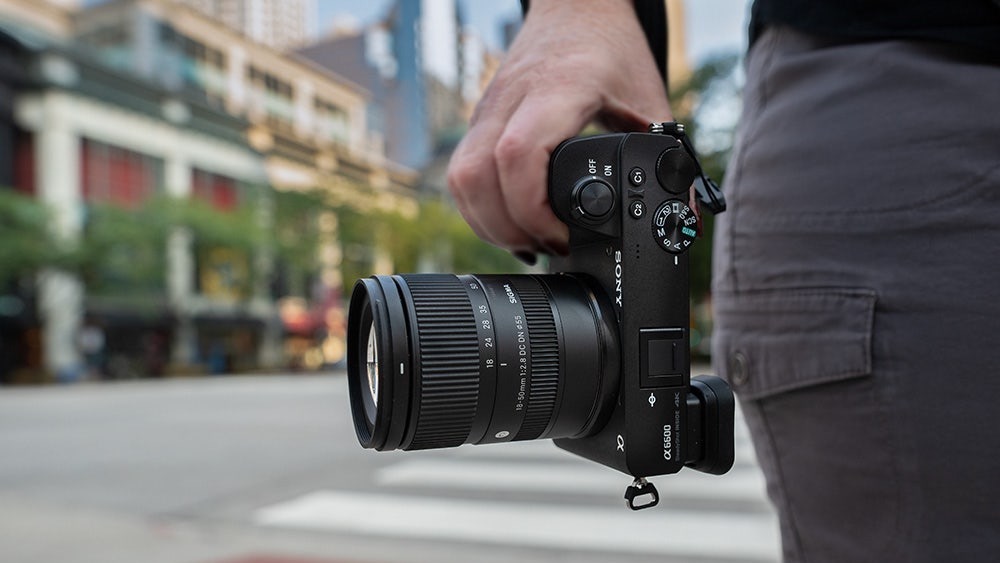
This year has been a bumper one for the cropped sensor formats, not just with the arrival of significant new camera models, but a revived interest among the independent lens makers. Sigma, for example, has recently introduced models in the Fujifilm X mount and expanded its offerings in the Sony E mount to include the ultra-compact 18-50mm f/2.8 DC DN zoom.
The focal range is equivalent to 27-75mm – so it’s a versatile all-rounder – packed into a lens that is just under 75 millimetres in length and weighs in at a mere 290 grams… making it the smallest and lightest in its class. Sigma has been able to trim off the grams by using its specially-developed polycarbonate material which it calls a Thermally Stable Composite. TSC is used for the barrel tubes while metal alloys are used internal to enhance the over strength. The lens mount is machined from a solid billet of stainless steel and the barrel is sealed to protect against dust and moisture.
On the inside, glass-moulding techniques have been used to create three high-performance aspherical elements that can do the work of many more conventional types, enhancing sharpness and correcting for aberrations and distortion. The optical construction employs a total of 13 elements, which also includes one with super-low dispersion (SLD) characteristics to help deal with chromatic aberrations. The advanced optical design enables the constant maximum aperture of f/2.8 and the zoom’s usefulness is further enhanced by a minimum focusing distance of just 12.1cm. The autofocusing drive uses a stepping motor, so it’s responsive, fast and very quiet.
Sigma offers the 18-50mm f/2.8 zoom in the E mount for Sony’s cropped sensor bodies and, not surprisingly, the L mount for the likes of Leica’s T series APS-C mirrorless cameras. Once you get over the surprise at just how compact and light this lens is, the next revelation is how nice it is to use, and then how something so small delivers such a big performance optically. The overall sharpness is exceptional with great contrast, and there are negligible chromatic aberrations, either lateral or longitudinal. Minor distortion is easily corrected in-camera on a Sony, as is the slight vignetting, although stopping down fixes this too. Affordability is the icing on the cake and it all adds up to a winning formula.
Read more in the Sigma 18-50mm f/2.8 DC DN | C review
Photo Printer
Canon Pixma G660 MegaTank
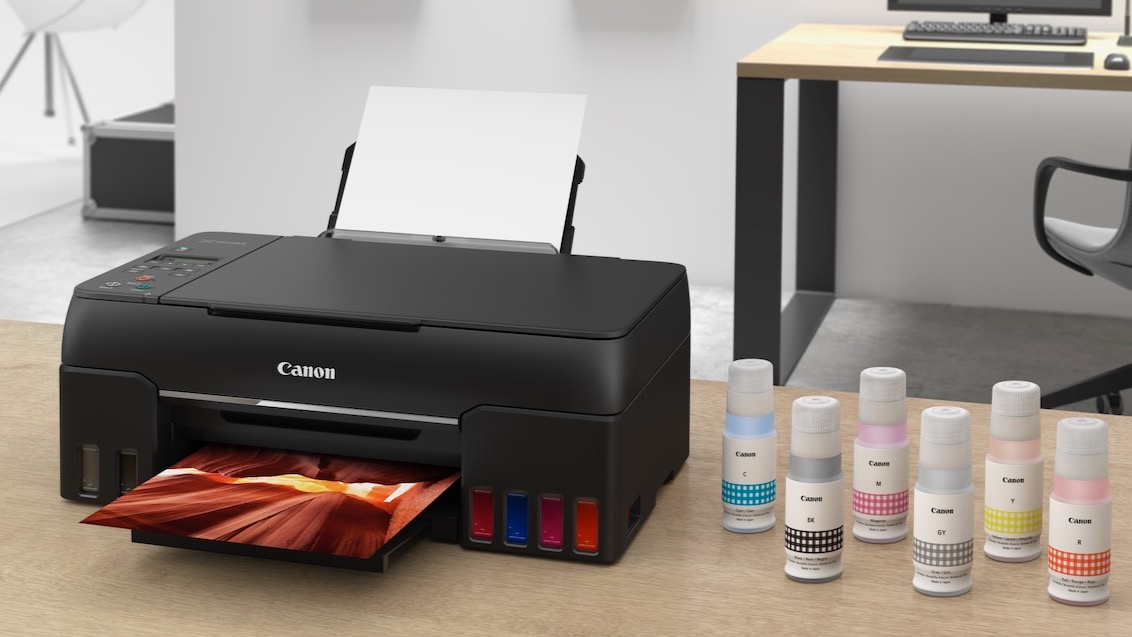
Presumably, it has been economic considerations (i.e. profits) that have kept the printer manufacturers wedded to packaging ink in one-shot cartridges for so long. Now environmental concerns are forcing a change in thinking and refillable ink tanks are slowly, but surely making inroads into the photo printer segment. There are economic aspects here too, but probably only for anybody making a lot of prints, which will help offset the significantly more expensive printer. Just why they should cost so much more isn’t really clear except that the consumables represent much less of a subsidy. No matter, the environmental benefits are the primary motivation for switching to a refillable tank printer… not just because it dispenses with the hugely wasteful cartridges, but printers built to last longer also represent a reduction in plastic waste and also the carbon footprint associated with manufacturing new ones.
The good news for photographers is the growing choice of models for photo printing, especially in the A4 format. It’s also good news that the image quality is steadily improving and Canon’s PIXMA MegaTank G660 uses a six-colour ChromaLife 100 dye-based ink set with cyan, magenta, yellow and black, plus red and grey for a wider colour gamut and better contrast. The first-generation tank printers could be pretty messy affairs when it came to topping up the reservoirs, but the nozzle design has been improved with Canon’s new GI-63 series MegaTank ink bottles so they couple more securely to avoid leaks and, additionally, are unique to each colour so you can’t mix them up either.
Canon’s own calculations indicate that a set of ink bottles will allow you to print up to 3,800 borderless 4x6-inch (i.e. postcard size) photo prints, which works out at just 4.7 cents each. Additionally, the G660 can output a 4x6-inch print in just 47 seconds, and it has a 100-sheet rear feeder tray for uninterrupted volume printing. As well as printing up to A4 borderless, it can be set up for making panoramas of up to 1.2 metres in length. Doing our own sums, we estimate the reduction in print costs can be as much as 90%. While the printer’s initial purchase price is close to twice that of the comparable cartridge model, add in the cost of a set of inks and the gap closes significantly. Consequently, the potential for quite substantial savings over a shorter period of time than you might expect is undeniable. The print quality is exceptionally good too, with good tonality and depth for both colour and B&W. It’s also a plus that the G660 accepts a wide selection of photo and fine-art papers so the creative flexibility when it comes to presenting your images is there too.
Canon’s MegaTank G660 is a convincing argument for the refillable tank photo printer because there are real savings to be had, and the print quality is excellent for a dye-based model. You really don’t have anything to lose here and the environment is the winner.
Read more in Canon Megatank G660 review
Read more:
Best cameras for photography
Best lenses to buy now
Best cameras for enthusiasts
Australian Camera is the bi-monthly magazine for creative photographers, whatever their format or medium. Published since the 1970s, it's informative and entertaining content is compiled by experts in the field of digital and film photography ensuring its readers are kept up to speed with all the latest on the rapidly changing film/digital products, news and technologies. Whether its digital or film or digital and film Australian Camera magazine's primary focus is to help its readers choose and use the tools they need to create memorable images, and to enhance the skills that will make them better photographers. The magazine is edited by Paul Burrows, who has worked on the magazine since 1982.
